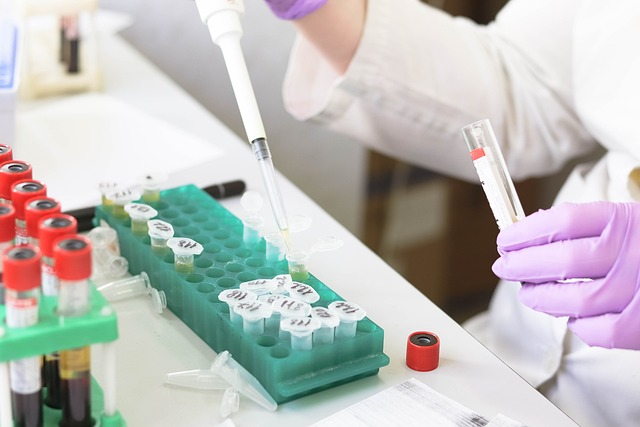

Dr Chris Airey
Low testosterone levels can impact your daily life, with symptoms such as a loss of body hair, a decrease in muscle mass, and a low libido (sex drive). If you think you have low testosterone levels, you can visit a healthcare provider or do an at-home testosterone blood test.
Checking your testosterone levels will ensure you get the proper treatment, depending on the results. Below we look at the best testosterone tests, how to take a testosterone blood test, and what a low testosterone level looks like.
What is Testosterone?
Testosterone is the primary male hormone and mainly impacts those assigned as males at birth. It is known as an androgen, which means it is responsible for developing many male characteristics, such as the growth of the penis and testes, body hair, and sperm.
Testosterone is mainly produced by the gonads, which is the testes in men and the ovaries in women. It is also produced by the adrenal gland in small quantities. The hormone has a vital role in the body and can regulate essential functions, including:
● Energy levels
● Muscle strength
● Muscle mass
● Body weight
● Mood
● Bone density
● Sperm production
● Sex drive
Your testosterone levels are regulated and controlled by other hormones, such as gonadotropin-releasing hormone (GnRH) and luteinising hormone. These are released from the brain and send signals to your testes to produce testosterone.
When your testosterone levels are in the normal range, signals are sent to your brain to stop or slow down the production of GnRH, stopping further production of testosterone. Your body is constantly producing and regulating testosterone levels in the background.

Why is a Testosterone Test Important?
A testosterone test is important as low testosterone can cause many health issues. Testosterone deficiency can cause problems like:
● Little or no changes during puberty
● A decrease in sperm reduction, which can be checked with a fertility test
● Loss of body hair
● A change in mood, such as depression, stress, or anxiety.
● Low sex drive, which directly impacts your relationship with a partner
● Osteoporosis, a medical condition where bones become weaker and are more likely to break
● Difficulty sleeping
● An increase in body fat, which may cause obesity (30 or higher on the BMI (body mass index) scale)
● A decrease in muscle strength and mass
● Difficulty with concentration and memory
● Fatigue (feeling very tired all the time)
By taking a testosterone test, you can check if you need treatment for testosterone deficiency or if there is another reason for your symptoms. It can help you understand the cause of your symptoms and get the correct treatment, such as TRT (testosterone replacement therapy).
A testosterone test is also important if you want to have a baby, as testosterone directly affects sperm production, which can cause fertility issues.
Although low testosterone levels in females are not as common or symptomatic as males, it can impact sex drive and ability to orgasm.
What are the Different Types of Testosterone Tests?
The only way to determine low testosterone levels is through a blood test. The two different types of testosterone blood tests are:
● An at-home blood test done through a finger prick.
● A venous blood test carried out by a doctor or nurse at a healthcare facility.
A total testosterone blood test will usually check that your testosterone levels are in normal range. They can also check for other hormones related to testosterone regulation and production, such as GnRH and luteinising hormone. This can help a healthcare professional with a diagnosis, as other hormonal imbalances can cause low testosterone.
How to Prepare for a UK Testosterone Test?
A testosterone blood test should be done before 10 AM, when testosterone levels are usually at their highest. If you already use testosterone therapy or another hormone treatment, getting a venous blood sample for accurate results is recommended.
If you are doing an at-home blood test, ensure your fingers have not been in contact with any hormone supplements, including natural testosterone boosters, for at least four weeks. Hormone supplement remnants can remain on your fingers for weeks, meaning it could influence the test results and provide a false representation of your hormone levels.
You should not take biotin (vitamin B7) supplements for two days before a testosterone blood test. If you take biotin supplements, speak to your doctor before taking the test.
What is Included in a UK Testosterone Test?
When you order a testosterone home test kit, it will have everything you need to complete the test. This includes detailed instructions on completing the test correctly.
The test will also include:
● A few lancets: This is a device that will prick your finger to draw a small amount of blood.
● Blood sample bottle: You will use this to collect your blood sample. The bottle will have a line which indicates the level it needs to be filled to for the lab to accurately test your blood.
● An alcohol wipe: This should be used before the sample to clean your fingers and improve the accuracy of the test.
● Labels: Small labels will be included which should be attached to the sample bottle. This will make sure the lab knows which sample belongs to who.
What are Normal Testosterone Levels?
Normal testosterone levels change at certain ages and will slowly decrease from 30 onwards. Normal testosterone levels for males by age are:
● 0 to 5 years: less than 12 ng/dL (nanograms per decilitre)
● 6 to 10 years: less than 25 ng/dL
● 11 to 15 years: less than 830 ng/dL
● 16 to 17 years: 102 to 1010 ng/dL
● 18 to 99 years: 193 to 824 ng/dL
Normal testosterone levels for females by age are:
● Under 1 year: less than 21 ng/dL
● 1 to 5 years: less than 12 ng/dL
● 6 to 10 years: less than 25 ng/dL
● 11 to 17 years: less than 79 ng/dL
● 18 to 99 years: less than 40 ng/dL
What Can Affect Testosterone Levels?
There are a number of things that can affect male testosterone levels, such as:
● A hormonal imbalance
● Stress levels
● Alcohol consumption
● How much exercise you do
● Weight, including obesity or extreme weight loss
● Age
● Gender
● A medical condition which affects testosterone, such as mumps
● Injury to the testicles
● Certain medications, like prostate cancer treatments and chemotherapy
● Use of anabolic steroids
Female testosterone levels can be affected by:
● Tumours
● Certain medications
● Menopause
● Problems with the ovaries, adrenal glands, or pituitary glands
● Medical conditions like PCOS (polycystic ovary syndrome)
● Long-term contraceptive use, including patches, pills, or the injection
Are There Any Risks Associated with a UK Testosterone Test?
There are no risks associated with taking a testosterone blood test. Whether you choose to visit a healthcare professional or carry out a home test, a blood test is very straightforward and safe.

How to Interpret the Results of a UK Testosterone Test
Your results will be available within two to three days after your blood sample has arrived at the lab. If you do a test through the NHS, the waiting time may be longer. A testosterone test measures the testosterone levels in your blood in ng/dL (as seen above). This includes both free testosterone and total testosterone.
Free testosterone is unbound to proteins and acts on your tissues. Total testosterone is all testosterone in your blood, including testosterone attached to proteins.
By knowing the normal levels of testosterone for your age group, you can check whether your results are normal or low. Other hormones may be tested at the same time. Your doctor will talk to you about what each result means, or there will be a detailed explanation with your test results.
If your result is lower than normal or borderline, it’s recommended to take a second test after four weeks.
Frequently Asked Questions About UK Testosterone Tests
Below are some frequently asked questions about testosterone testing and treatment options.
How do I use a testosterone home test kit?
To order and get a testosterone test kit, you will need to complete a questionnaire and fill in some details. This will be used to check that a testosterone test is the right choice for you based on your symptoms. You can then order the test to your home which can fit straight through your letterbox.
Open the test and follow the instructions provided. You will need to clean your finger with the wipe provided before using the lancet to take a small sample of blood.
Once your blood sample bottle is filled to the line, you can seal the bottle and add any labels. Return your sample to a lab (there should be an envelope provided with your test kit). Once your sample is tested, your results will be available, usually through an online portal.
Will I be able to get treatment if I get tested?
Yes, but only if your testosterone levels are low and require treatment. If your testosterone levels are not low and you have symptoms, you should seek medical advice for further testing to find the cause.
What treatment is available for low testosterone?
Prescription testosterone treatment is available both privately and through the NHS. This is called testosterone replacement therapy (TRT) and can be used to maintain a normal testosterone level.
Can a testosterone test be used for fertility?
Although testosterone can impact fertility, a testosterone test cannot check your fertility levels. If you want to know more about your chances of conceiving, you should take a male fertility test instead.
Can I take a testosterone test if I’m already taking testosterone replacement therapy?
A testosterone test can be a great way to check whether your testosterone therapy is working as it should. Your doctor should regularly monitor your testosterone levels if you are on TRT, but you can always check it at home if you don’t want to wait.
Can women take a testosterone test?
Yes, women can also use a testosterone test if they are experiencing symptoms of low testosterone. Although less common, low testosterone in women can lead to vaginal dryness, poor bone density, and a reduced sex drive. Women can also have high testosterone levels which can impact body hair growth, such as PCOS. Please note: testosterone tests should not be used to diagnose PCOS.










